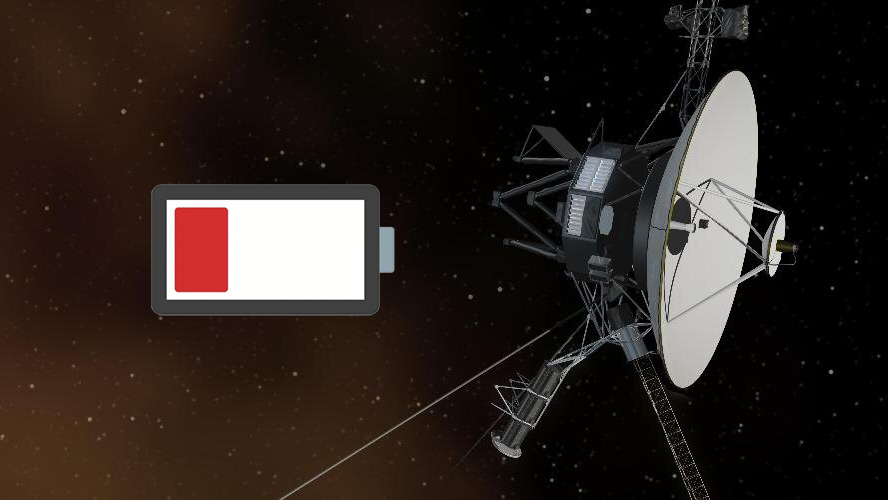
Every time my laptop or phone batteries run low, I go into panic mode. How am I supposed to live without my precious technology? I'll do whatever I have to to extend that battery life just a bit longer. Turn down the screen brightness. Turn off background apps. Farewell, Bluetooth. As it turns out, NASA's million-dollar nuclear-powered space probes run into the same problem and have essentially the same solutions.
Space.com reports that NASA can keep the Voyager 2's space mission up and running until 2026 with a fairly simple technique we've used for ages: turning stuff off. Originally the space probe was due for a complete shutdown this year because of a lack of power, but NASA found one last system it could shut down, postponing its retirement by at least three years.
Voyager 2 is now tapping into its last bit of reserve power from its voltage regulator, which under normal operation helps prevent power surges. The conserved power is being diverted to its science instruments so it can still collect data and send it back to NASA for at least another three years.
Both Voyager probes power themselves using RTGs (radioisotope thermoelectric generators) that convert the heat from plutonium into electricity. As the plutonium decays, less and less power is generated. Through the years, NASA engineers have turned off non-essential systems like heaters to keep the mission going.
Voyager's project manager Suzanne Dodd said they had been "monitoring the spacecraft for a few weeks, and it seems like this new approach is working."
NASA doesn't seem too worried about potential power surges since it noted that the electrical systems on both the Voyager 1 and 2 probes have been stable for over 45 years. The engineering team will monitor the voltage and respond if it fluctuates too much.
"Variable voltages pose a risk to the instruments, but we've determined that it’s a small risk, and the alternative offers a big reward of being able to keep the science instruments turned on longer," Dodd said.
Knowledge is power! ⚡️Thanks to my team, I'm now using a small reserve of backup power to operate the five science instruments I use to study interstellar space. Because of this, I can postpone shutting down one of my science instruments until 2026, rather than this year. – V2April 26, 2023
Voyager 1 and 2 were launched in 1977. The science mission to Saturn and Jupiter was meant to last only four years. NASA extended the mission and sent Voyager 2 to Neptune and Uranus, making it the only spacecraft ever to pass the planets. The mission was again extended so the probes could continue their interstellar sightseeing tour.
Currently, Voyager 2 is more than 12 billion miles away from Earth, while Voyager 1 is about 11 billion miles from home.
Fun and terrifying space fact! Voyager 1 carries a "golden record" containing sounds and images of life on Earth. If extraterrestrials ever encounter it, they can get a sense of what Earth culture is like and, I don't know, maybe, visit? Hopefully, they find the letter from President Jimmy Carter that was sent with Voyager to be as touching as I do.







